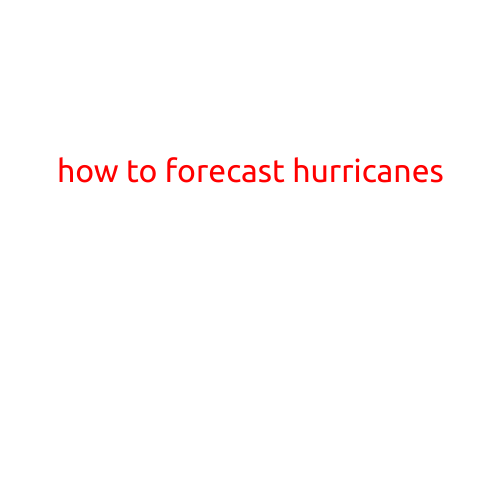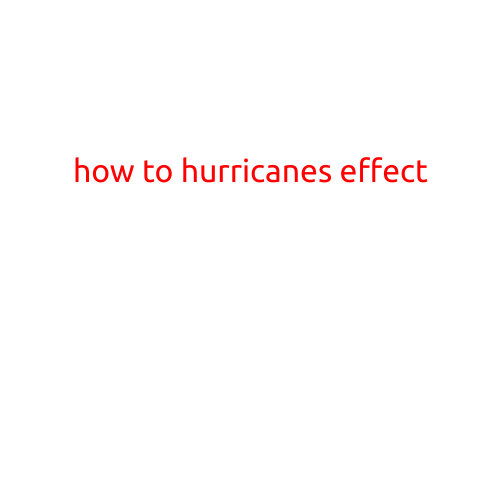
How to Forecast Hurricanes
As hurricane season approaches, it’s essential to understand the intricacies of hurricane forecasting. Hurricanes can bring catastrophic destruction and damage, and being prepared is key to ensuring safety and minimizing losses. In this article, we’ll delve into the world of hurricane forecasting, exploring the different techniques used by meteorologists and the importance of long-term forecasting.
Understanding the Factors That Influence Hurricane Formation
Hurricanes are powerful tropical cyclones that form over warm ocean waters. The ideal conditions for hurricane formation include:
- Warm ocean water: Hurricanes need a minimum sea surface temperature of 26.5°C (80°F) to sustain themselves.
- Moisture: High levels of atmospheric moisture are necessary for hurricane formation.
- Wind shear: Hurricanes thrive in areas with low wind shear, which allows them to maintain their rotation and intensity.
Meteorologists use these factors to identify areas prone to hurricane formation and monitor their development.
Forecasting Techniques Used by Meteorologists
Meteorologists employ various techniques to forecast hurricanes, including:
- Computer Modeling: Advanced computer models, such as the Global Forecast System (GFS) and the European Centre for Medium-Range Weather Forecasts (ECMWF) model, help forecasters predict hurricane tracks, intensity, and formation.
- Satellite Imagery: Satellites like GOES-16 and GOES-17 provide high-resolution images of tropical cyclones, allowing forecasters to track their development and movement.
- Radar and Radial Velocity: Radar and radial velocity measurements help forecasters track the movement and intensity of hurricanes.
- Pilot Reports: Pilots flying over tropical cyclones provide valuable data on storm characteristics, such as wind speed and direction.
- Surface Data: Weather stations and buoys report wind speed, sea level pressure, and other essential data, which forecasters use to refine their predictions.
Long-Term Forecasting
Long-term forecasting is crucial for ensuring that communities are prepared for potential threats. Forecasters use historical data and statistical analysis to predict the likelihood of hurricane formation and landfall.
- Seasonal Outlooks: The National Oceanic and Atmospheric Administration (NOAA) releases seasonal outlooks in May, predicting the likelihood of above-average, average, or below-average hurricane activity.
- Month-to-Month Outlooks: After the seasonal outlook, meteorologists release month-to-month outlooks, which forecast the probability of hurricane formation during specific periods.
Importance of Long-Term Forecasting
Long-term forecasting allows communities to prepare for potential threats, including:
- Evacuation Planning: Knowing the likelihood of hurricane landfall enables evacuations, reducing the risk of loss of life and property damage.
- Infrastructure Preparation: Communities can take proactive measures to secure infrastructure, such as securing outdoor items and trimming trees, to minimize damage.
- Resource Allocation: Governments and emergency management officials can allocate resources effectively, prioritizing areas most vulnerable to hurricane impacts.
Conclusion
Forecasting hurricanes requires a deep understanding of the complex factors involved in their formation and movement. By employing advanced computer modeling, satellite imagery, and surface data, meteorologists can accurately predict hurricane tracks, intensity, and formation. Long-term forecasting also plays a critical role in ensuring that communities are prepared for potential threats. As hurricane season approaches, understanding the intricacies of hurricane forecasting is essential for ensuring safety and minimizing losses.





